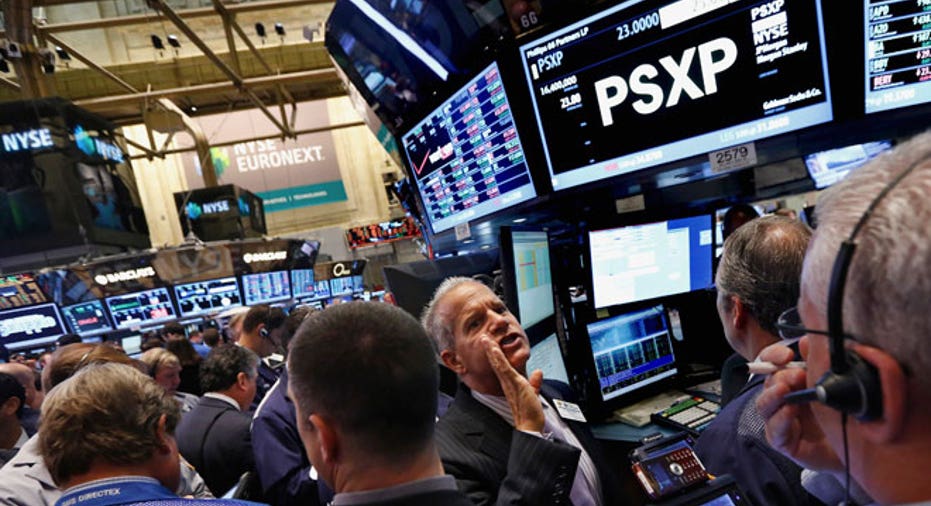Startups Racing to Offer Markets Speed, Security

Five days after Nasdaq’s “Flash Freeze,” NYSE Euronext (NYSE:NYX) and Nasdaq OMX Group (NASDAQ:NDAQ) are still unable to agree on what caused the three-hour pause in trading of all Nasdaq-listed stocks.
With Nasdaq attributing last Thursday’s trading halt to a technical glitch, market analysts say the freeze underscores the complexity of the interconnected global markets in an age dominated by the loved-and-hated high-frequency trading.
“It’s an unprecedentedly complex cocktail of rules and connections and servers and speeds and pricing models that all come together,” says Paul Rowady, senior analyst at the TABB Group.“It takes a lot to keep up.”
And some tech entrepreneurs are in the race, trying not only to keep up, but beat the curve by developing the fastest and greatest fiber-optic cables. At the same time, other tech startups are developing technology aimed at protecting global markets from the types of dangers that may result from faster electronic trading speeds.
Throughout the ‘90s, Rowady says technology innovation allowed for increasingly greater automation and the speed associated with high-frequency trading. In 2001, the average daily volume on the nation’s stock exchanges exploded to 3.2 billion, compared to 14 million shares as the daily average in the 1960’s, according to a State Street Global Markets report.
A dozen national stock exchanges have since emerged: NYSE Euronext, Nasdaq OMX Group, BATS Global Markets, Direct Edge (BATS and Direct Edge announced a merger this week), National Securities Exchange (formerly Cincinnati regional exchange) and the Chicago Stock Exchange. Plus about 50 “dark” pools are in operation, where identities are hidden and operations are automated, according to the State Street research.
In 2009, the Tabb Group estimates that high-frequency trades made up 61% of all U.S. equity shares traded; in 2013, this figure is slightly lower, at an estimated 52%.
While faster trading speeds and automation have allowed for firms to make huge profits from tiny fluctuations in prices, technology also leaves the markets more vulnerable to a host of expensive risks, from glitches to cyber-threats. And as HFT critics argue cutting-edge technology is more of a problem than solution, some new companies are hoping to capitalize on these issues by providing even more advanced software.
Technological Risks Facing the Markets
From the 2010 Flash Crash that erased 1,000 points from the Dow Industrials in just minutes to traders in mid-August blaming a “fat finger” for a 53% jump in volume over minutes on China's Shanghai Stock Exchange Composite Index, Rowady says glitches are “natural,” as exchanges try to accommodate highly automated trading firms.
But technology mishaps can also be incredibly costly, both for exchanges and HFT firms, not to mention investors. Knight Capital’s technology breakdown in 2012 resulted in a loss of more than $450 million for the company. And in that same year, electronic exchange BATS Global Markets botched its own IPO due to a software glitch.
Malfunctioning technology isn’t the only risk facing HFT firms and exchanges; the high speed of trading and an increasing dependency on automation leaves the financial sector increasingly vulnerable to cyber-attacks. Meanwhile, lawsuits involving alleged theft or attempted theft of high-frequency trading code are becoming a sign of the times.
“The theft of these programs could cost the victim company millions of dollars in losses, allow a competitor to predict a company’s actions, or give a competitor the opportunity to profit using the victim companies’ strategies,” said the FBI's assistant director of the cyber division, Gordon M. Snow, when testifying about such a case in 2011.
While Nasdaq CEO Robert Greifeld said last week in an interview with FBN’s Liz Claman that there was absolutely no cyber mischief involved in the shutdown, he did call hacking “a fact of life.” He said that the exchange also has to improve what he referred to as “defensive driving.”
“Our system by itself is working, but you have interconnections in the world we live in today, and we have to handle bad actions from some of those people connected to us,” said Greifeld. “We have to improve on that.”
Innovators Working on Defensive Driving
While fiber network firms like Hibernia Networks and Allied Fiber aim to provide the financial sector with even faster networks, feeding HFT firms’ need for speed, other companies are attempting to provide the industry with the type of high-tech defensive driving tools called for by Greifeld.
One such company, Gemedy, Inc., is run by Alexander Wissner-Gross, PhD., a scientist and entrepreneur who serves as a fellow at Harvard’s Institute for Applied Computational Science and a research fellow at MIT’s Media Laboratory.
“We’ve devoted so much time and energy to optimizing intelligence in individual markets,” says Wissner-Gross. “Building up resilience inter-markets is just as important as intra-market.”
Wissner-Gross says Gemedy’s artificial intelligence software, which is used both in the financial sector and by government organizations, allows for autonomous systems that don’t need to be told what to do – even when faced with instability or cyber-threats. In essence, this type of software hopes to solve the core problem posed by high-frequency trading, which is that glitches happen more frequently when there’s more trading volume and fewer humans behind the wheel.
“We need technology that better internalizes and reflects human values and human resilience,” he explains.
While Wissner-Gross declined to discuss Gemedy’s current clients or revenue, he says the young company, which was founded in 2011, is already profitable.
“I think that financial cyber-security is a huge ... challenge in need of fixing,” he says. Wissner-Gross says many cyber-security efforts are focused on patching Windows upgrades, rather than trying to solve greater, more over-arching issues.
“There are many opportunities in addressing the higher-hanging fruit in these particular areas,” he says, describing the market as potentially worth trillions of dollars.



















